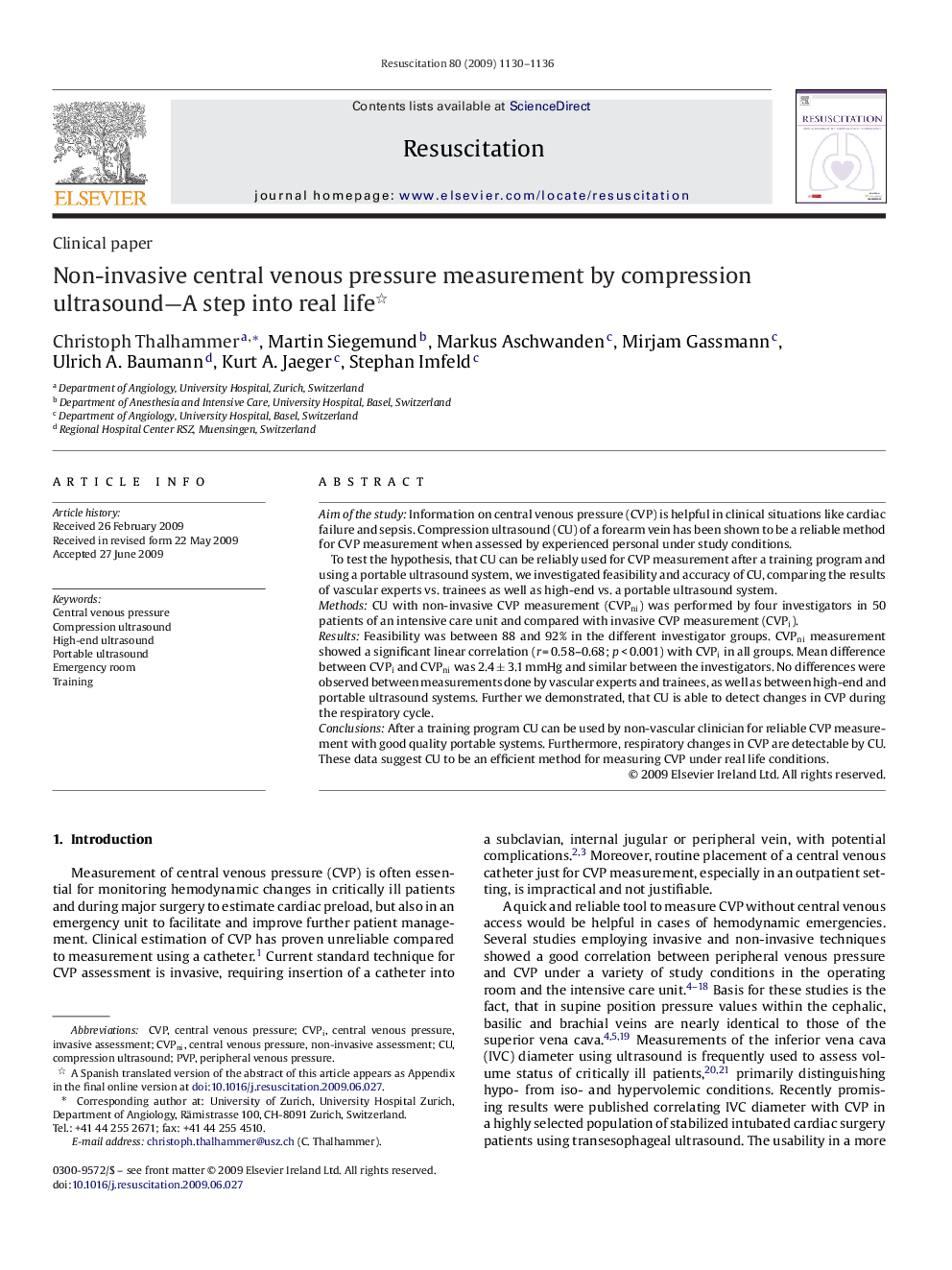| Article ID | Journal | Published Year | Pages | File Type |
|---|---|---|---|---|
| 3010861 | Resuscitation | 2009 | 7 Pages |
Aim of the studyInformation on central venous pressure (CVP) is helpful in clinical situations like cardiac failure and sepsis. Compression ultrasound (CU) of a forearm vein has been shown to be a reliable method for CVP measurement when assessed by experienced personal under study conditions.To test the hypothesis, that CU can be reliably used for CVP measurement after a training program and using a portable ultrasound system, we investigated feasibility and accuracy of CU, comparing the results of vascular experts vs. trainees as well as high-end vs. a portable ultrasound system.MethodsCU with non-invasive CVP measurement (CVPni) was performed by four investigators in 50 patients of an intensive care unit and compared with invasive CVP measurement (CVPi).ResultsFeasibility was between 88 and 92% in the different investigator groups. CVPni measurement showed a significant linear correlation (r = 0.58–0.68; p < 0.001) with CVPi in all groups. Mean difference between CVPi and CVPni was 2.4 ± 3.1 mmHg and similar between the investigators. No differences were observed between measurements done by vascular experts and trainees, as well as between high-end and portable ultrasound systems. Further we demonstrated, that CU is able to detect changes in CVP during the respiratory cycle.ConclusionsAfter a training program CU can be used by non-vascular clinician for reliable CVP measurement with good quality portable systems. Furthermore, respiratory changes in CVP are detectable by CU. These data suggest CU to be an efficient method for measuring CVP under real life conditions.
